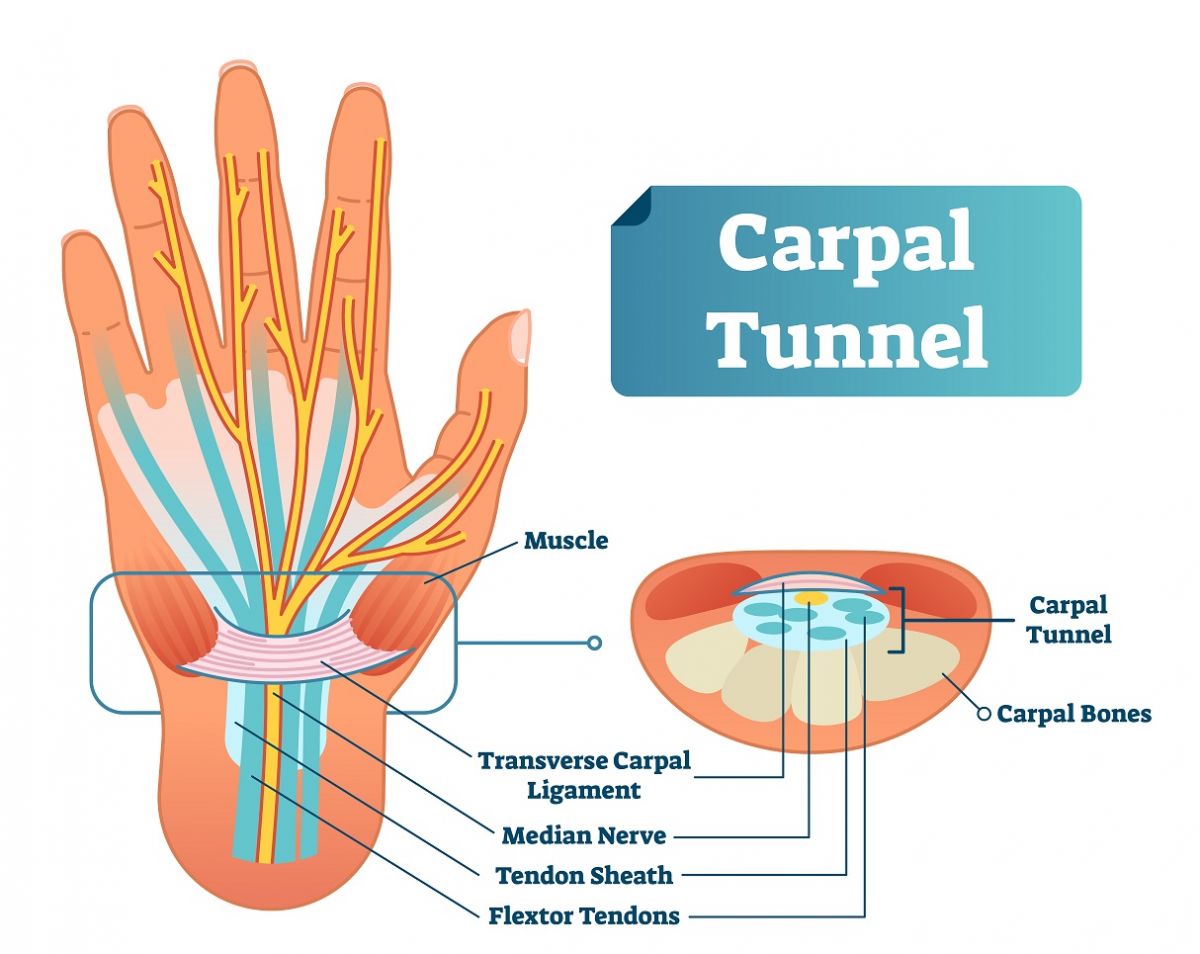
Carpal Tunnel Syndrome: What is it?
Carpal tunnel syndrome (CTS) is a condition that occurs when the median nerve is squeezed within its passage between the wrist bones and the transverse carpal ligament as it moves toward the hand. The median nerve provides sensation to half of the palm on the thumb side of your hand, the thumb, the first two fingers and half of the third, as well as the tips and the top half of the back of the same fingers. The nerve also supplies the muscles on the front of the forearm, wrist, and thumb. These muscles work to bend the wrist, turn the palm down, and move the thumb.
What causes Carpal Tunnel Syndrome?

The carpal tunnel is a narrow space with many anatomical structures passing through it. Due to this, anything that causes this space to narrow further could put pressure on the median nerve.
The condition usually results from a reduction of space within the tunnel, rather than a specific injury to the median nerve. Many factors can contribute to the space narrowing, including specific job tasks, pregnancy, previous injuries, or other medical conditions.
Who gets Carpal Tunnel Syndrome?
Carpal tunnel syndrome affects about 3-6 percent of the population, with females being 3 times more likely than males to develop the condition. There is evidence that having type 1 or 2 diabetes increases the chances of developing carpal tunnel, while being overweight also increases risk by 1.5 times. Other possible risk factors include menopause, hypothyroidism and pregnancy (possibly due to increased swelling or a build-up of fluid in the tissues in your wrist).
Jobs that involve long-term exposure to vibrating tools, manual material handling or a lot of bending and straightening of the wrist, hands and fingers can also put you at risk. Interestingly, there is limited evidence that using a keyboard or computer can lead you to develop carpal tunnel syndrome symptoms.
If they’re not managed properly, fractures, sprains, strains of the wrist can also play a role in developing the condition. Sometimes, no specific injury or condition causes CTS. Instead, a slightly altered anatomy in the carpal tunnel (making it more likely to be compressed) is the culprit.
What are the symptoms?
The most common symptoms include tingling, burning, or numbness in the palm of your hand, as well as the thumb, index, and middle fingers. The symptoms appear gradually, and often during the night since many people bend their wrists in their sleep. Over time, symptoms begin to appear during the day and the muscles of the thumb, hand and wrist seem affected.
How is CTS diagnosed?

The most common method of diagnosis is with a clinical history and physical testing. This will involve a review of your medical history and symptoms, as well as specific testing of your neck, hands, arms, shoulders and wrists. The sensation in your hand and fingers may be tested, and specific tests can be done to attempt to reproduce your symptoms. Your doctor can order laboratory tests and x-rays to check for other things that could be causing your symptoms, such as fractures, arthritis or any systemic diseases that can affect the nerves. Nerve conduction testing assesses the ability of the nerve to send signals to muscles and can be helpful in diagnosing CTS.
Treatment: surgery vs physiotherapy
There are two methods of treating CTS: surgery and physical therapy. The surgery for CTS varies, but usually involves cutting the carpal ligament to allow more space for the nerve. The ligament heals following the surgery. You’ll experience relief from your symptoms soon after surgery, but full recovery often takes months.
Recent studies have shown that physiotherapy can be just as effective as surgery in treating the condition. In fact, patients who undergo physiotherapy treatment sometimes experience faster improvements after one month compared to patients who chose the surgery option.
Physiotherapy treatment can include manual, hands-on techniques that help increase mobility of the nerve while also working to improve the range of motion of joints that affect the carpal tunnel. Your physiotherapist will also educate you on how to best manage your symptoms and review various exercises and stretches with you that can help you with your condition.
If you have been diagnosed with CTS or are simply experiencing common symptoms, it’s a good idea to book an appointment with a physiotherapist. If you’d like to schedule an appointment, check out our Locations page to find a Lifemark clinic near you or book online.



